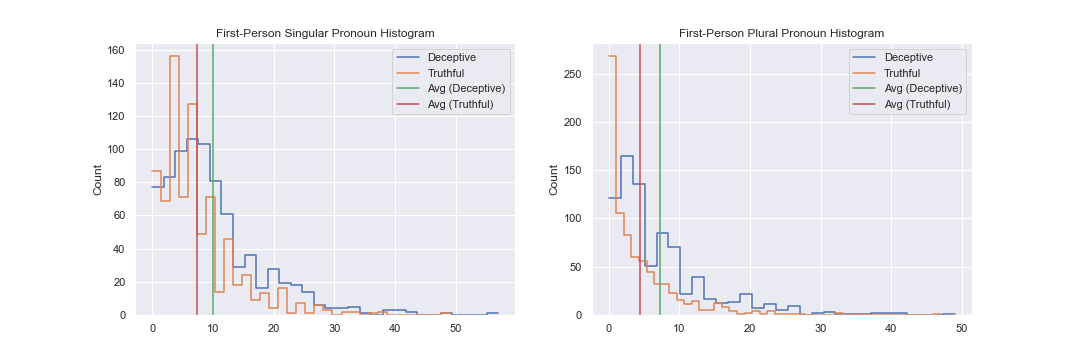Since arriving in the US, I realized that online shopping has become a major part of my shopping experience, especially for college students who don't own a car. However, reviews for many products contradict among themselves. Hence, I started to be curious whether some of these reviews were fake. Shortly after, I came across a New York Times article stating that Amazon admits the existence of a large number of fake reviews out there deceiving people. So, I decided I'd try to use machine learning to detect them.
From literature reviews, Deceptive Opinion Spam Corpus by Ott et al. is considered to be a gold-standard dataset for research in this area. It consists of 1,600 reviews divided into 50:50 fake and real and 50:50 positive and negative opinions. Fake reviews were generated by hiring people to write them through Amazon Mechanical Turk. Their proposed model achieved 87% accuracy. This is used as my baseline performance. Although these are reviews for hotels, I consider them to sufficiently relate to the problem of interest.
The dataset is of high quality (no wonder it's a gold standard data for research). See a sample of truthful and deceptive reviews below.
Truthful:
I stayed for four nights while attending a conference. The hotel is in a great spot - easy walk to Michigan Ave shopping or Rush St., but just off the busy streets. The room I had was spacious, and very well-appointed. The staff was friendly, and the fitness center, while not huge, was well-equipped and clean. I've stayed at a number of hotels in Chicago, and this one is my favorite. Internet wasn't free, but at $10 for 24 hours is cheaper than most business hotels, and it worked very well.
Deceptive:
Terrible experience, I will not stay here again. The walls were so thin that I was kept up all night by the party going on in the suite next to mine. I talked to the management several times, but nothing was done. It may just be the people that I had contact with, but I thought the staff was standoffish and rude. Very unpleasant experience, especially given the cost of staying here!
The distributions of most lexicon features are similar between truthful and deceptive reviews. However, as shown in the figure below, one subtle difference I found was that deceptive reviewers tend to use more first-person pronouns both singular and plural.
Two models were developed: traditional NLP model using bag-of-word and lexicon features and fine-tuned pretrained neural network model. For the first model, data was cleaned by expanding word contractions, removing puncuations, tokenizing, lemmatizing, and removing stop words. Then unigram, bigram, and trigram bag-of-word features are created from this cleaned word tokens. Those features are then concatenated to other lexicon features - number of stop words, number of charactors per review, sentence length, number of first singular pronoun used - and fed into Random Forest which achieved 90% test set accuracy.
In the second model, state-of-the-art model in NLP - BERT - is adopted. Drop out and classification layer is added to the model, then the fine-tune process is done by feeding raw text data into the model. As recommended by BERT's author, fine-tune process is done on all layers of BERT. Although this could lead to a better result, the model could easily overfit the training data. Thus, a very small learning rate is used and we only train the model for 3 epochs. The model achieved 92% test accuracy, beating baseline by 5% absolute.
A research has shown that human accuracy on this task is around 50%, thus this model can definitely help evaluate trustworthiness of online reviews.
- Paul, H., & Nikolaev, A. (2021). Fake review detection on online E-commerce platforms: a systematic literature review. Data Mining and Knowledge Discovery, 35(5), 1830-1881.
- Jacob, D., Ming-Wei, C., Kenton, L., Kristina, T. (2019). BERT: Pre-training of Deep Bidirectional Transformers for Language Understanding
- Ott, M., Cardie, C., & Hancock, J. T. (2013, June). Negative deceptive opinion spam. In Proceedings of the 2013 conference of the north american chapter of the association for computational linguistics: human language technologies (pp. 497-501).
- Ott, M., Choi, Y., Cardie, C., & Hancock, J. T. (2011). Finding deceptive opinion spam by any stretch of the imagination. arXiv preprint arXiv:1107.4557.
